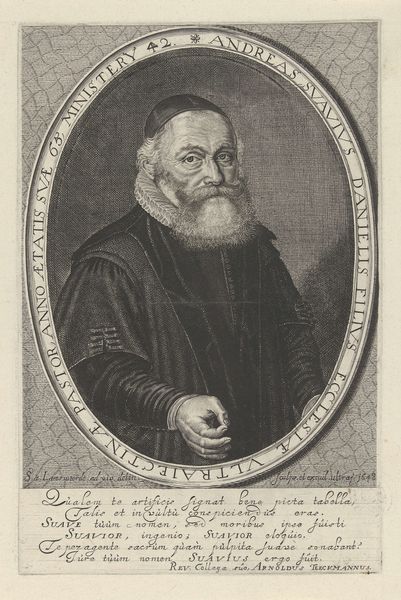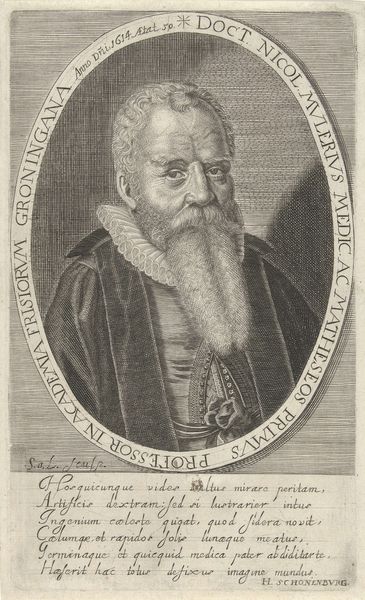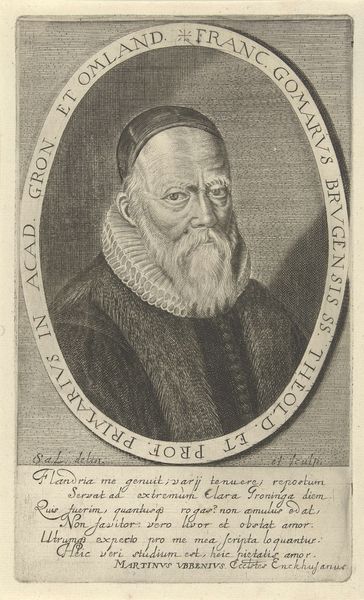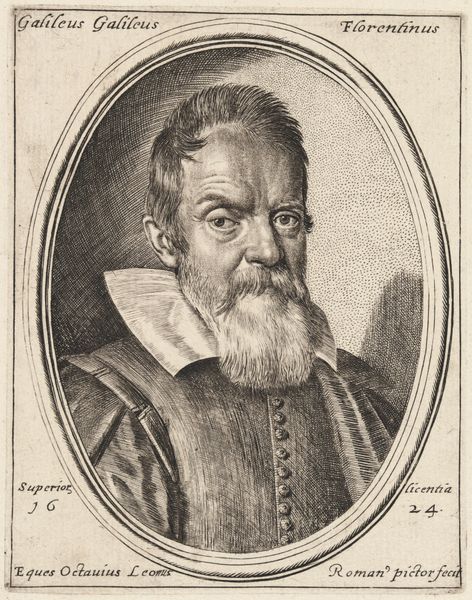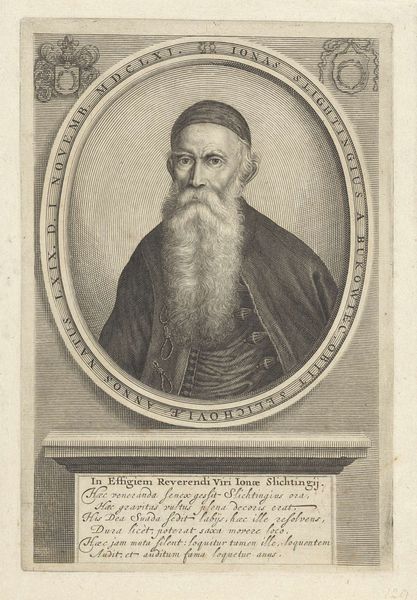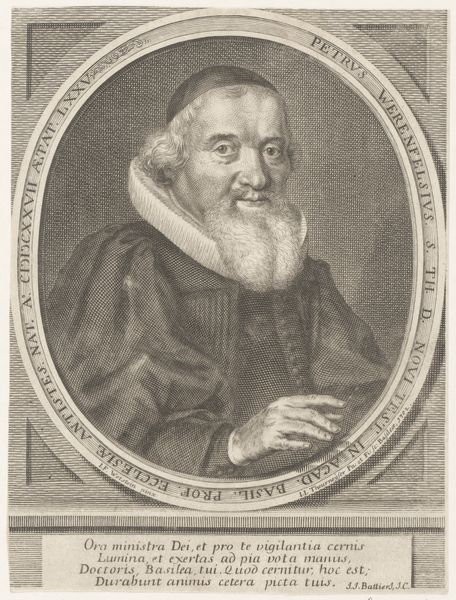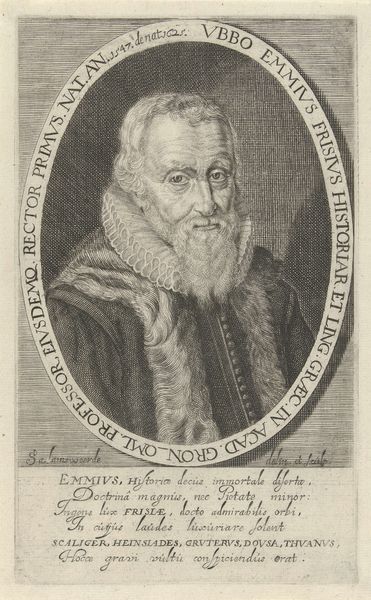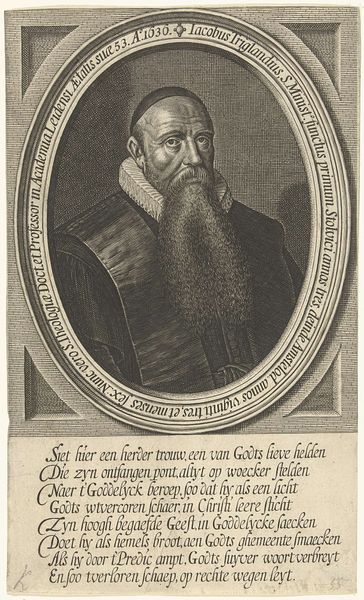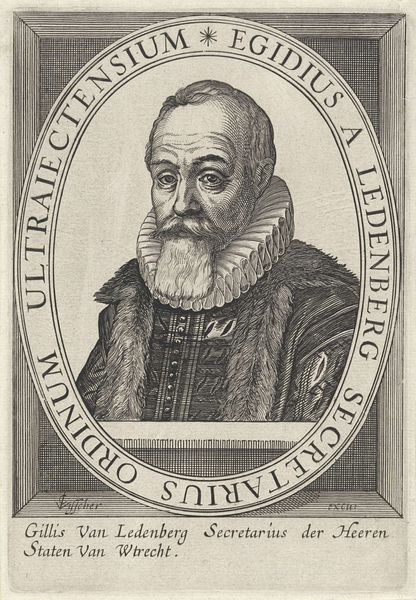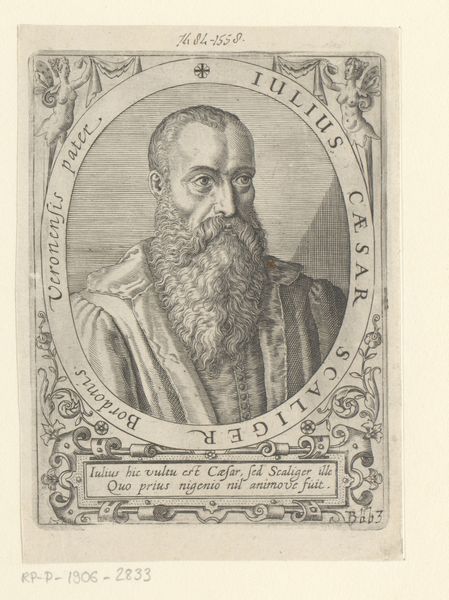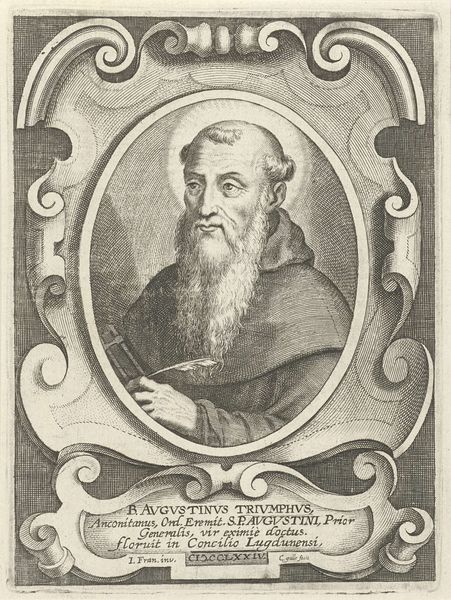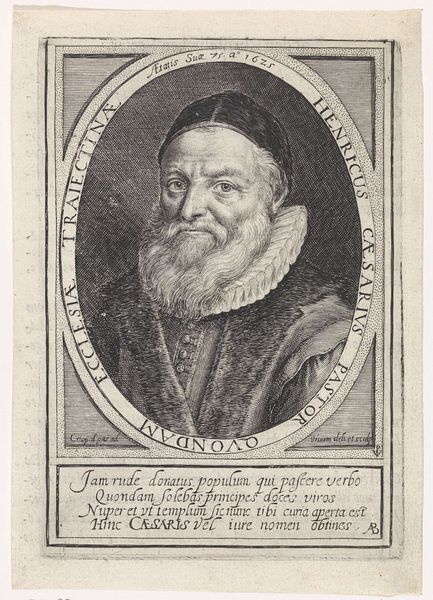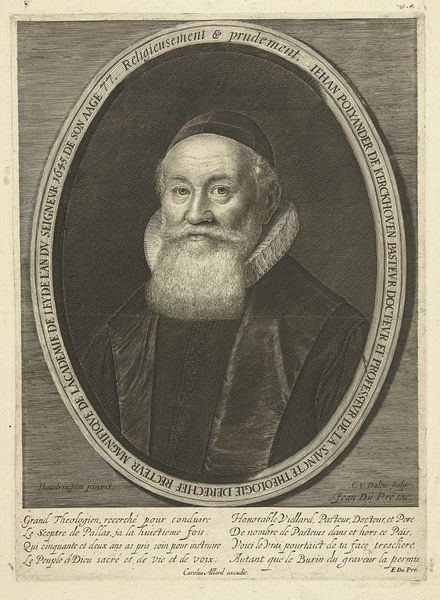
print, engraving
#
portrait
#
baroque
# print
#
line
#
history-painting
#
engraving
Dimensions: height 221 mm, width 132 mm
Copyright: Rijks Museum: Open Domain
Curator: Today we are observing Steven van Lamsweerde's "Portret van Abdias Widmarius," an engraving from 1654. What strikes you first about it? Editor: The most notable aspect to me is the sitter's intense gaze and magnificent beard, creating an overall impression of steadfastness, wisdom, and authority—qualities we can associate with religious and political power in 17th-century Holland. The lines of the print enhance the portrait's stern gravitas, I find. Curator: Indeed, Van Lamsweerde's employment of line engraving is particularly sophisticated, layering meticulously etched lines to generate shading, depth, and a remarkable textural richness, especially in the rendering of Widmarius's voluminous beard and the intricate folds of his attire. See the Latin text encircling his likeness, functioning as both frame and intellectual context for this learned man. Editor: That frame reminds us that portraits such as these often served purposes beyond simple likeness, particularly regarding societal power and recognition. Widmarius's role is noted on the etching—pastor of churches in multiple territories including Gelderland, Groningen, and Friesland. This suggests a sphere of profound spiritual and perhaps even political influence during a pivotal era. It’s interesting to reflect on how his physical appearance deliberately evokes notions of religious figures and intellectual distinction in the public sphere. Curator: Notice also how the composition balances textual and visual elements, employing contrasting forms such as straight and curved lines to harmonize what might otherwise compete for our focus. Van Lamsweerde has managed to imbue the print with an enduring aesthetic equilibrium. Editor: This balance mirrors the dual life suggested in the epitaph text, one of exilic movement “Bolga, Lyceo” that transitions into rooted, pious inhabitance of sacred knowledge: “mentem sapientid adornat." So the visual is not separate, but acts as a complement to this life story—making it quite dynamic. Curator: An incisive perspective that broadens how we consider this remarkable print. Editor: Yes, it reveals not only the power of carefully wielded lines, but the complex role of portraiture in constructing historical identities and preserving social hierarchies.
Comments
No comments
Be the first to comment and join the conversation on the ultimate creative platform.
